Introduction
From the outside, pipe smoking can be daunting. How do you choose a pipe? What tobaccos do you start with? How do you pack a bowl? How do you light it? Tamping, what does that even mean? This is a quick guide to help those intrigued by the hobby of pipe smoking by providing everything you need to know to get started.
Essential Gear
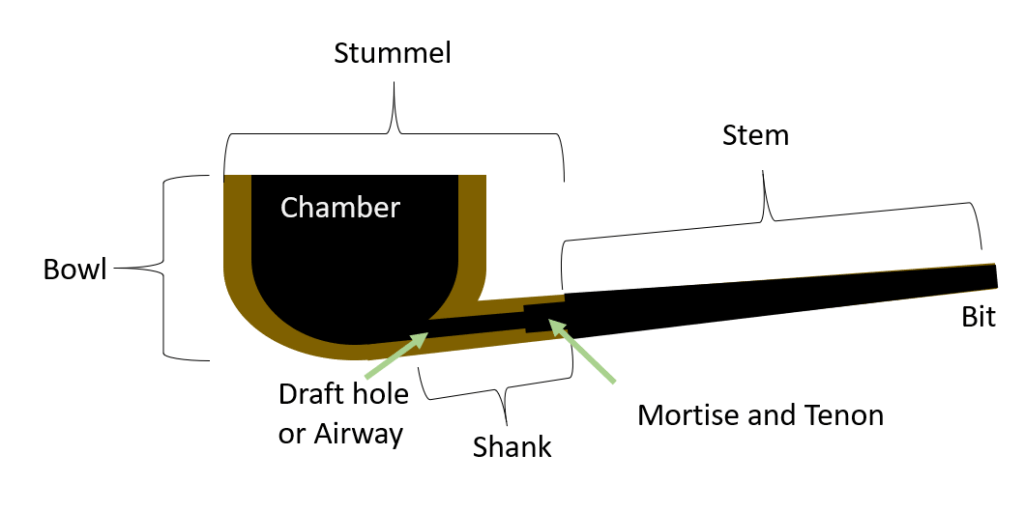
A pipe is constructed of two components, the stummel, which is made up of the bowl and shank, and the stem. The bowl is the outer shell of the smoking chamber of a pipe. The thickness of the rim generally indicates how thick the walls are. The thicker the walls of the chamber are, the slower the pipe will warm as you smoke and the cooler, more pleasant a smoking experience you will have. The shank, formed of the same material as the bowl, extends from the chamber to the stem. Pipes are constructed with a mortise and tenon joint between the shank and stem, so that the stem has an extension (tenon) which inserts into the hollowed out portion of the shank (mortise). The stem, typically made of vulcanite or acrylic, narrows to the mouthpiece, called the bit. The passage between the chamber and the bit through which smoke is drawn is called the airway. Well constructed pipes will have airways drilled through the center of the shank, to the mid-point of the chamber cylinder, and at or very close to the base of the chamber.
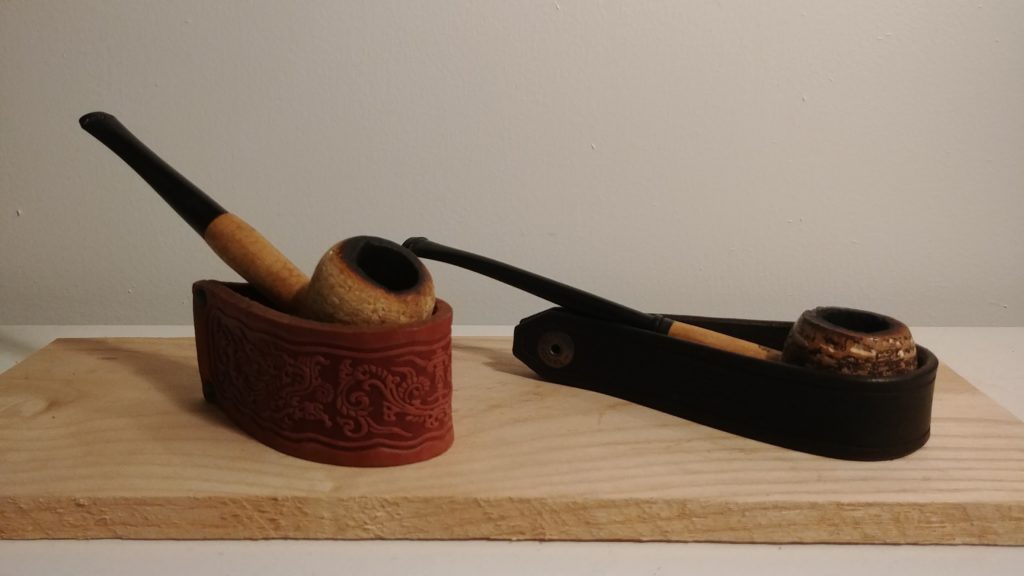
A Missouri Meerschaum corncob is an excellent first pipe, most styles can be had for less than $10, and they smoke as well briar wood pipes, which can cost 10-20 times as much. Pick a style that appeals to you. I recommend avoiding the mini, which has too small of a bowl and is prone to burnout and the Macarthur, which is comically guarguantan. Besides being inexpensive, good smokers, corn cob pipes have the added advantages of being less permeable to the flavors of the tobacco smoked in it, so you are less likely to have tastes carry over from one bowl to the next. This is called ghosting. Furthermore, they don’t need to rest longer than it takes to cool to room temperature to smoke again.
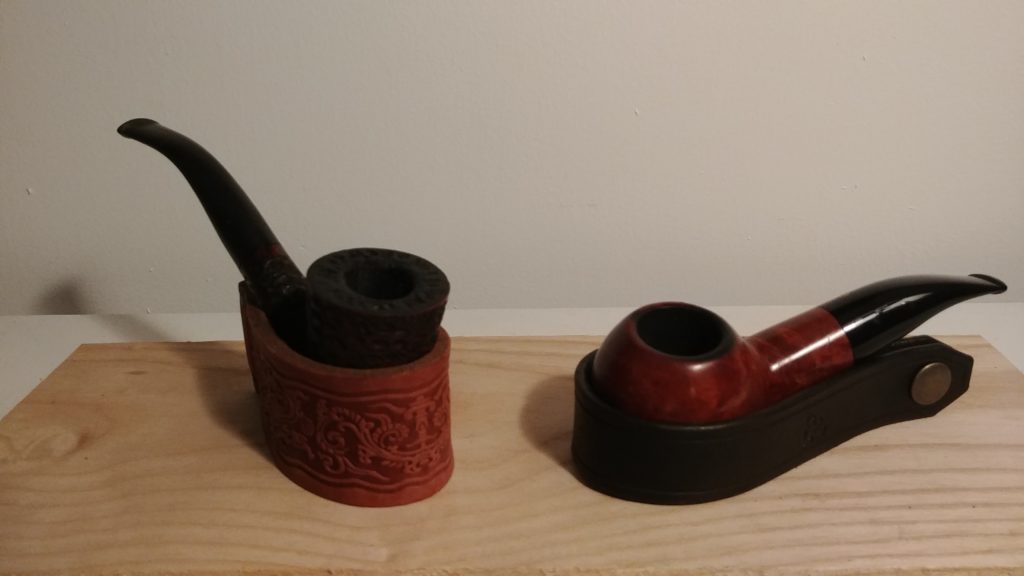
If you insist on a briar, like frankly I did myself, choose an established brand in the entry level price range ($40-$100). Savinelli, Rossi, Brigham, and Stanwell are dependable. If you buy a pipe in person, you may even have the option of an inexpensive ‘basket pipe’ which are often literally sold in baskets. Make sure you can pass a pipe cleaner through the stem so you can see it in the bowl. While this is not absolutely necessary, it is a sign of good drilling. Also check to see that the draft hole is fairly well centered and at the bottom of the bowl. While it was common practice in the heyday of pipe smoking to smoke the same pipe all day, everyday, your briar pipe will smoke better and last longer if you give it at least 24 hours if not a full 48 before smoking again, so it can dry out. Smoking a briar pipe before letting it fully dry can lead to you tasting sour, bitter, or off flavors as you reheat and release the trapped moisture.
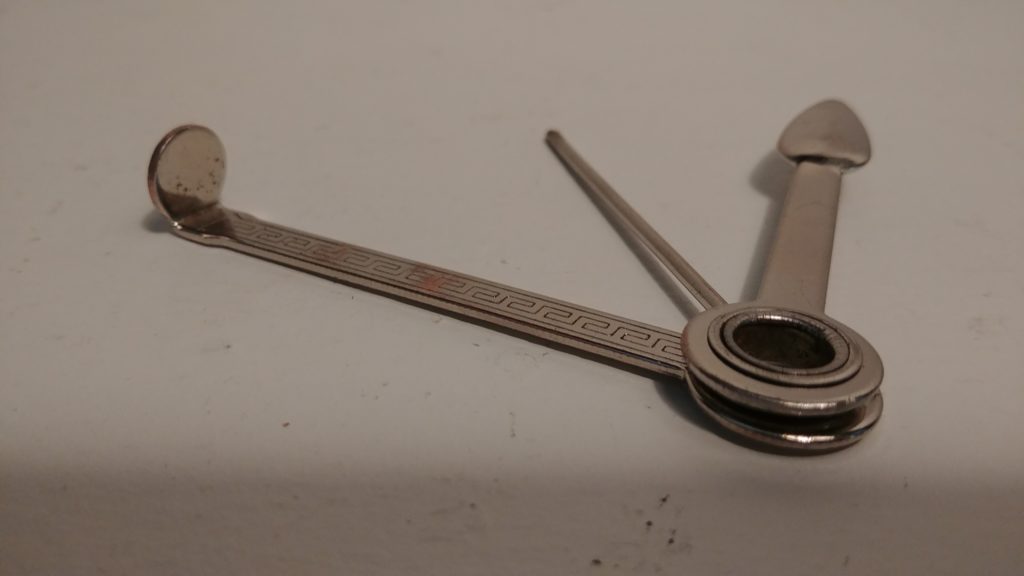
Tamper – I highly recommend the 3-in-1 Czech tool which gives you a tamper, a spoon, and a poker. However any fire resistant flat bottomed object can work, from a thin oak dowel to a shell casing.
Pipe Cleaners – Do not get your pipe cleaners from the craft store, but from your tobacconist. There are regular, bristle, and extra absorbent pipe cleaners. Just get the regular ones to start with.
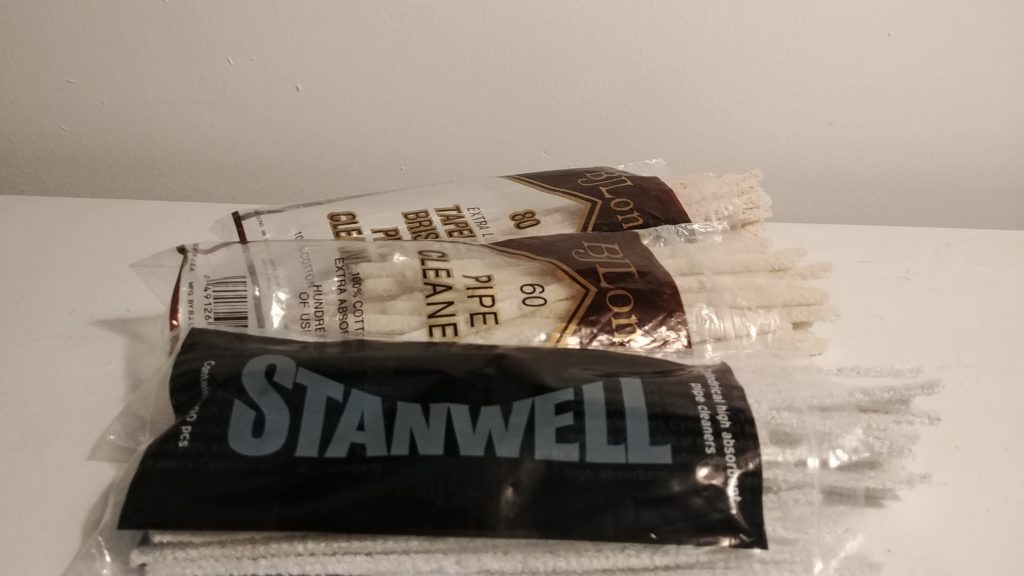
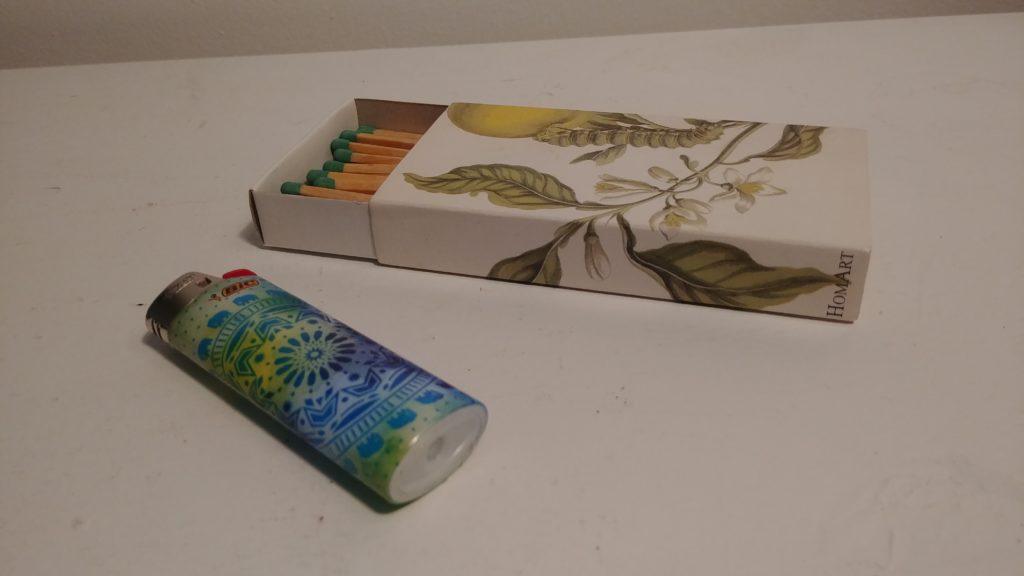
Fire Source – Dig up a bic soft flame lighter from your miscellaneous drawer or grab some cigar matches. Do not use a torch or you are likely to destroy your pipe and possibly your tongue. Zippos can be used, but they will impart that off flavor to your bowl.
Tobacco
Instead of rolling the dice on just one tobacco, it’s wise to start with a variety of types to see which ones you like and to understand the breadth of flavors that pipe tobacco can provide. There are numerous subtypes based upon the base components and the way the leaf is processed, but the base categories are: Aromatics, Burley, English, and Virginia.
English
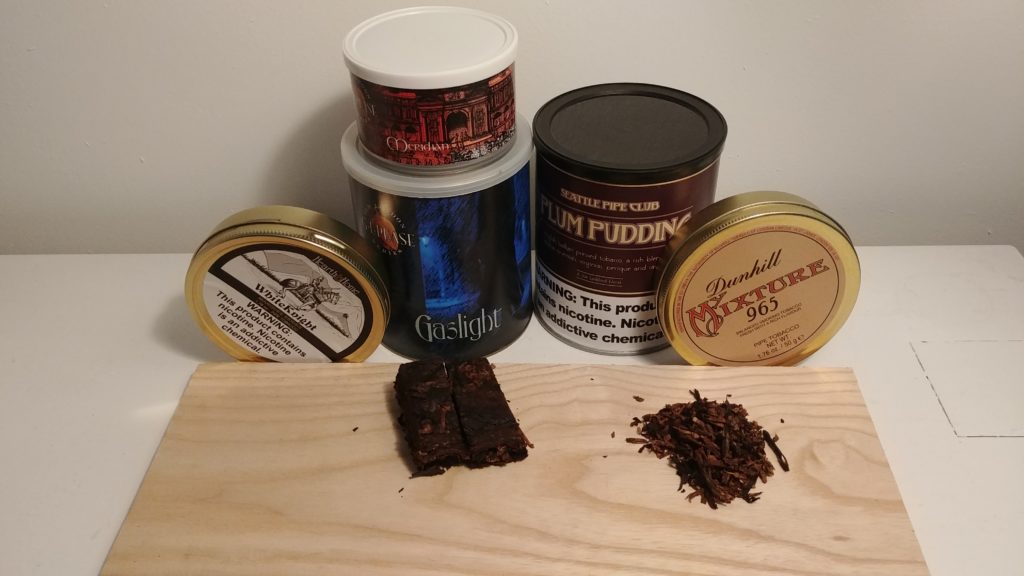
English blends are generally the best place for a new smoker to start. While traditionally English just indicated that there are no non-natural flavors added to a blend, in contemporary jargon this indicates a blend with a significant amount of Latakia. Latakia is Meditterean burley tobacco dried with pine smoke, which gives it a smoky, creamy, leathery taste. English blends are ideal for new smokers, as they are generally at the correct moisture to smoke straight from the tin and easy to pack ribbon cut form. Also, they are very flavorful even when you are still developing proper pipe smoking mechanics.
Recommendations:
Peter Stokkebye Proper English – A classic smoky-leather bulk offering. Find at: smokingpipes.com, 4noggins.com, bnbtobacco.com
Peterson My Mixture 965 – Another classic English blend that comes in tin that should be available world wide. Find at: smokingpipes.com, 4noggins.com, bnbtobacco.com
Presbyterian Mixture – This is a less Latakia centric blend which puts forward instead salty, herb, sour and sweet flavors. Check out my detailed review here. Find at: smokingpipes.com, 4noggins.com
Burley
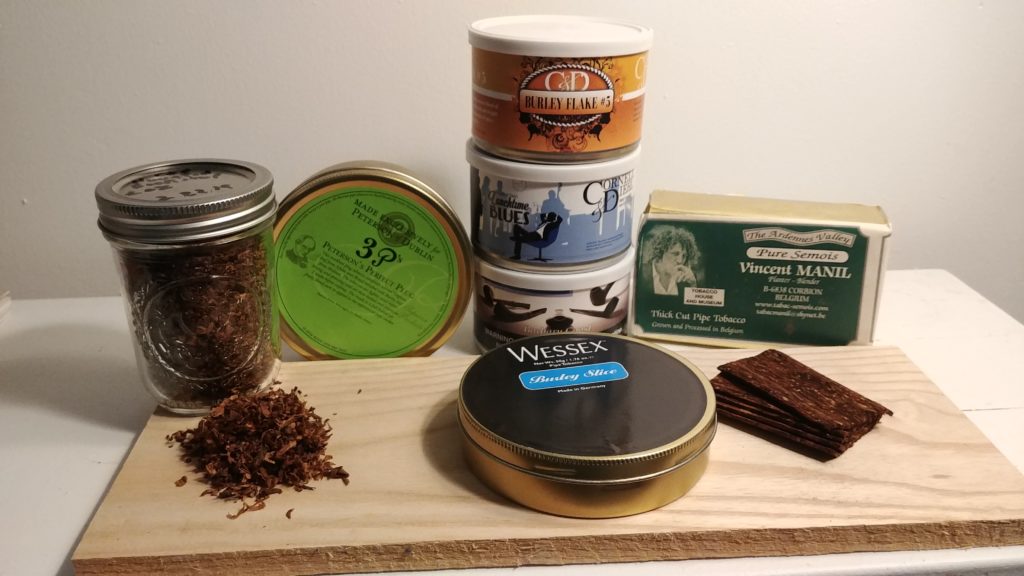
Burley, one of the two principal tobacco varieties, usually has nutty, coffee, and earthy flavors. This taste profile will be the most familiar to cigar smokers. While there are plenty of low nicotine burley blends, most of the stoutest pipe tobaccos out there are burley blends.
Recommendations:
Carter Hall – A medium mixture of Virginia and Burley, this is an ideal beginner tobacco as it burns excellently and never bites. This can only be found in the U.S., so elsewhere look for MacBaren Golden Extra.
Tabac Manil La Breumese ‘Semois’ – Semois is a burley like leaf grown in Belgium that is very flavorful, with a earthy-nuttines, and with its shag like cut, burns easily but quickly.
MacBaren HH Burley Flake – This is an excellent Virginia, Burley, and Dark Fired based flake which should be available throughout the world.
Virginia
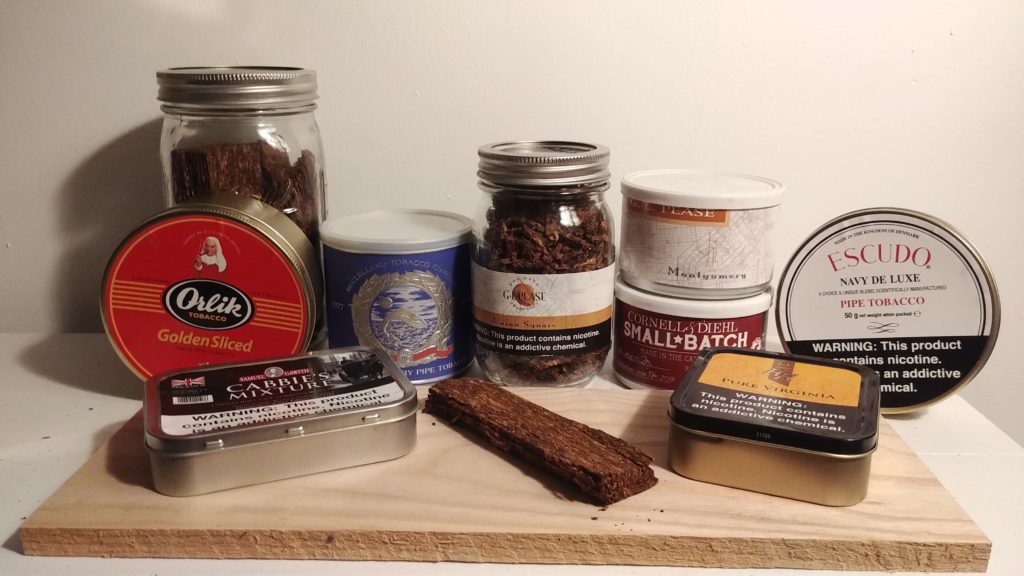
Virginia, the other principal variety of tobacco, is a high sugar content, lower nicotine leaf. These can provide natural sweetness to a blend, particularly after aging. Young Virginia typically tastes like hay, toast, sour cream, and vinegar. Age brings out fruit, salt, and umami notes similar to incense, soy sauce, and Worcestershire sauce. Virginia takes quite awhile to dial one’s palate into, so I wouldn’t recommend a straight Virginia for a new smoker, but a Virginia Perique (VaPer) blend which will be spicy and bold.
Recommendations:
Hearth and Home Anniversary Kake – This spicy-fruity-vinegar bulk VaPer is what solidified my love for pipe tobacco.
Peterson Elizabethan – This old guard classic tastes of fruit, hay, and spice and should be available worldwide.
STG Escudo – Escudo is another classic, this one in coin cut, which has a milder pepper note than both Elizabethan and Anniversary Kake.
Aromatics
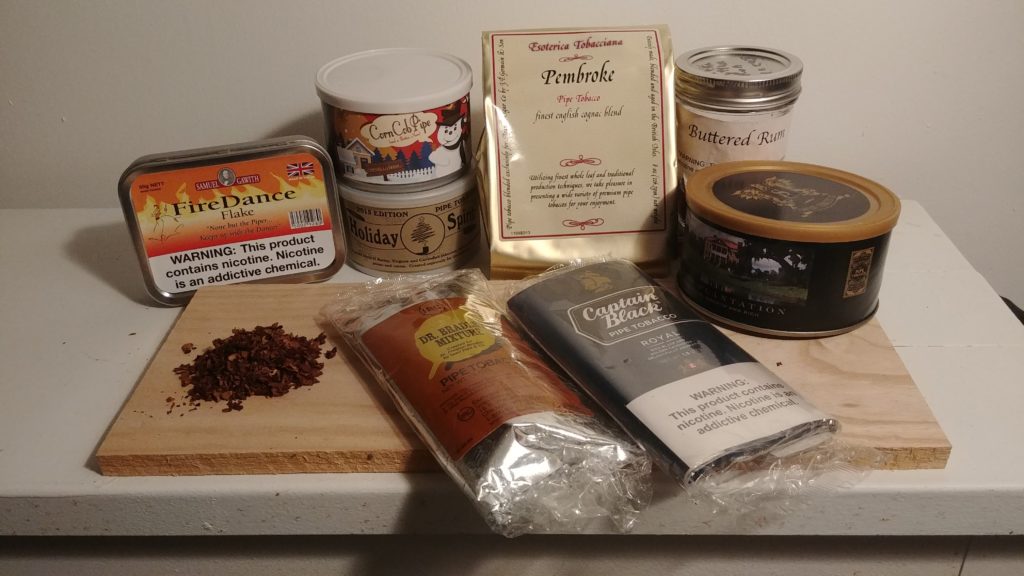
While many new pipe smokers are attracted to the rich smells in the jar or when smoked of aromatic tobaccos, when they go to smoke them, frustration and disappointment often ensues. Aromatics are often soggy with humectant to keep them fresh and deliver the chemical flavorings, which make them difficult to light and keep lit. This also leads to heavy tongue bite, a burning feeling that can last days after smoking pipe tobacco too hot. When new smokers can actually get aromatics to burn, the smoke is often flavorless, the richness of the aroma not making it into the taste. I personally recommend new pipe smokers to avoid these altogether until their mechanics are solidified on more forgiving blends.
Recommendations:
Captain Black Royal – The Captain Black line is one of the most available in the world, often still found in drug stores and gas stations. The Royal pouch is a bit more flavorful than the standard white, and it emits an aroma I’ve yet to had topped.
Erinmore Flake – Unlike more traditional aromatics which are flavorless Cavendish processed leaf soaked with a flavoring agent, this is a high quality Virginia and Burley pressed flake, topped with apricot. Be warned though, also unlike most aromatics which have next to no nicotine, Erinmore Flake is rather stout.
An Introduction to Pipe Mechanics
There are four phases of pipe smoking: storage, packing, smoking, and maintenance.
Storage
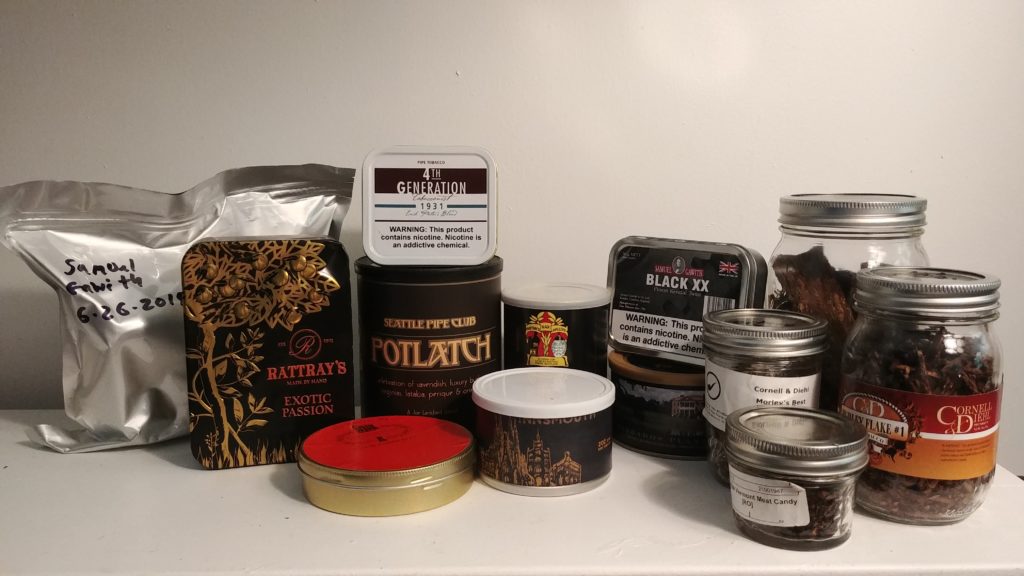
The only place where the pipe smoking hobby is less involved than cigars is storage. Pipe tobacco doesn’t need to have it’s moisture rigorously controlled, though moisture content is important. Pipe tobacco that comes in resealable plastic top or screw type round tins can often just be left in there after being opened, as long as you intend to smoke it within a month – assuming you don’t live in either a desert or a swamp. After that, and for any bulk tobacco you purchase, you should put in screw top mason jars or thick, double sided zip style mylar bags. Save for aromatics, whose additional flavorings, tend to fade over the years, properly sealed pipe tobacco just gets better and better over time as the components marry and fermentation sets in.
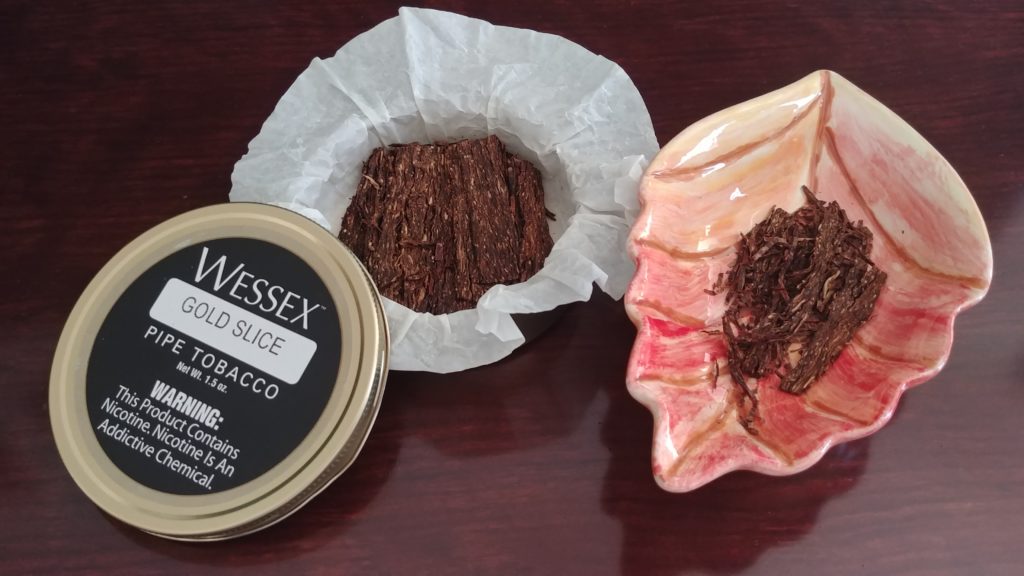
Many tobaccos are over-moist from the tin and need drying before smoking. Set a bowl’s worth of tobacco out on a plate or paper towel for a few minutes to a few days before packing. Getting the right moisture content is more art than science, as each blend will have its own sweet spot that varies from person to person, and the time will be dependent upon the ambient temperature, humidity, and air flow. Drying the tobacco often makes a tobacco light and smoke easier, but over drying the tobacco can result in loss of flavor. Read the Presbysterian Mixture review to see the changes that can be wrought by experimenting the drying times.
Packing
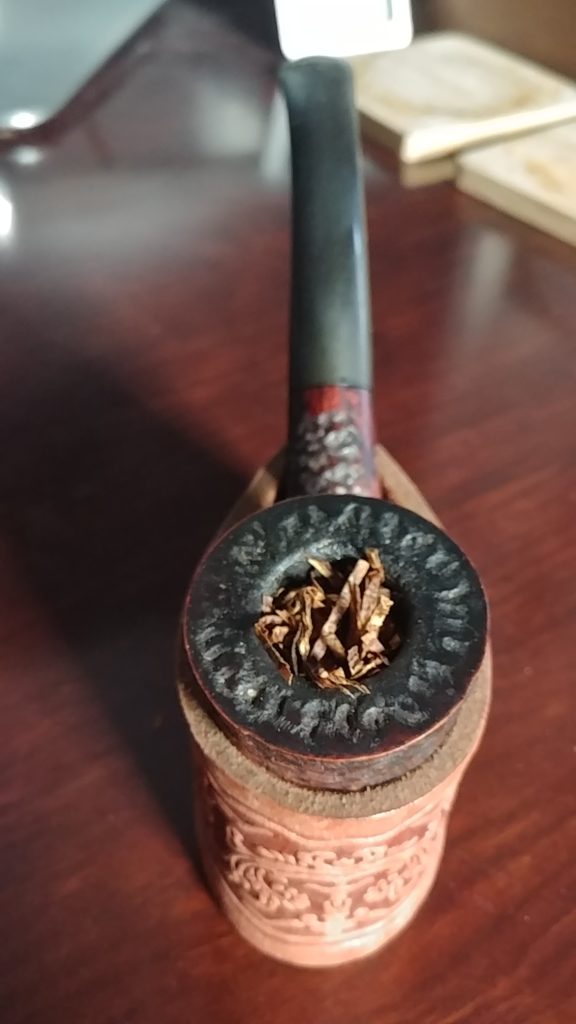
Perhaps the most intimidating of all the features of pipe smoking, packing a pipe suffers from poor nomenclature. We should really be talking of loading a pipe, as the word packing implies using significant force. Most introduction to pipe smoking guides recommend the 3 pinch method. Do not use this method. To load a pipe correctly using the 3 pinch method you already need to know what a well loaded pipe should feel like in the hand and in the pre-light draw. Instead use the Frank method, a reliable method of pipe packing for ribbon cut tobacco. Consult this video to see how it works.
Lighting and Smoking
Conventionally lighting a pipe comes in two stages, the pre or false light, where you light the top of the bowl, then lightly tamp down the ash, the true light, when you get a cherry going. In actuality, you’ll use a series of lights and forceless tamps to get the tobacco evenly lit all across the top. For some tobaccos it just takes one match or a single round with your bic. Some tobaccos, especially on the moister end, can take a dozen or so flicks of the flame to get going.
Do not inhale the smoke. If you come from smoking cigarettes this may be a hard urge to resist, but pipe tobacco is not processed in a way where it is ever advisable to inhale. Keep it to the fore of your mouth.
Once you’ve got it going, try smoking as slowly as possible, waiting just to the point the ember is going to go out to take a small sip. This is going to often be around 10-30 seconds. This will feel rather quick for those of you coming from cigars. However the slower and thus cooler you smoke, the more flavor you can taste, and the less danger there is of burning your tongue. If you want to smoke even slower, keep the pipe in your mouth and breathe normally through your nose. Every few breaths your mouth will have filled up with smoke.
You are going to want to tamp very lightly every 5-10 puffs to help keep the ember going. Place the tamper just on the top of the ash, puff slowly. Move the tamper around the bowl, either in a swirling motion, or moving the tamper upland down to tamp the ash of the whole bowl. The purpose of this is to keep the ash relatively thin, so the tobacco can still burn easily, and to ensure the burn is even across the width of the bowl. If you pack lightly, you may need a smidgen of force to crush the ash. If you pack densely or when you smoke flake, coin, or rope cut tobaccos you will want to use zero force as to not overcompress the already dense leaf.
The bowl will likely go out numerous times while you smoke, but that’s just part of pipe smoking, just relight it and keep going. As you get better drying, packing, smoking at the right cadence, and tamping at the right interval, relights will be less frequently needed.
You are done smoking, well, when you are done smoking. Quit whenever you like. If there is still tobacco left in the bowl you can return to it and smoke it again later. Most blends will be just as good and some will actually be better. If you’ve smoked down to the bottom of the bowl you might find some small shards that don’t burn. This is called dottle. The only thing to do is toss it out.
Maintenance
Once you are done smoking, stick a pipe cleaner down the stem as far as you can go and give it a couple of twists. Then stick the other end – or loop the cleaner – and swab out the bowl. Do not ever pull the stem from a pipe while it is still hot. It could warp permanently and never fit again or it could even crack the pipe. If you have a cob you can smoke it again as soon as it cools down. For briars wait at least 24 hours if not the full 48 hours generally recommended. You won’t ruin your briar smoking it more often than that, but you can sour it, requiring more frequent deep cleaning.
Concluding Remarks
With this information you should be able to get into pipe smoking. Remember this is a hobby, it will take some time to get good at it. Be patient with yourself, and soon smoking your pipe will be next to effortless, so you can focus on the stupendous array of flavors pipe tobacco has to offer.


